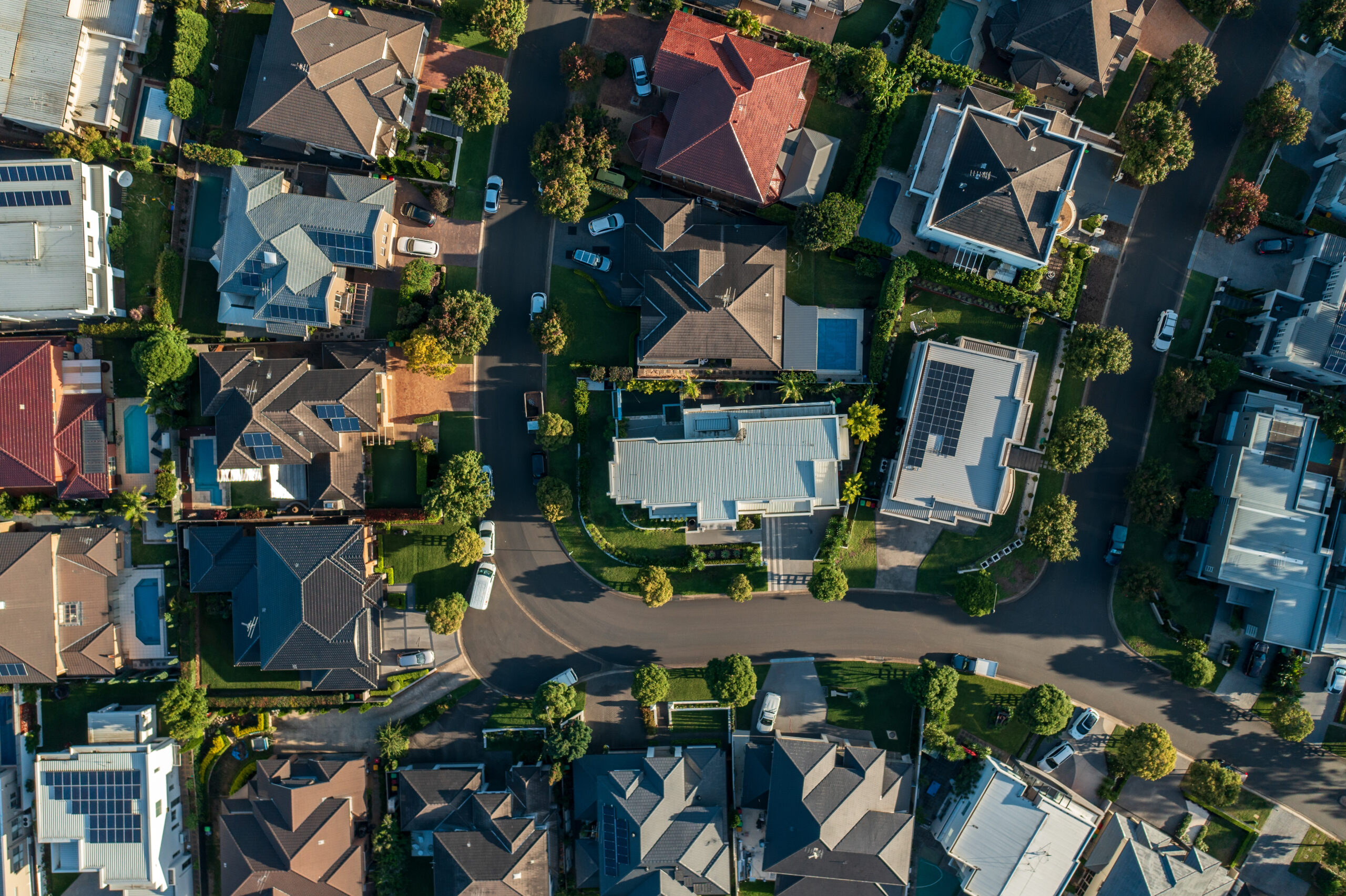
Build to Rent (BTR) is an established sector in the USA (estimated at 12% of residential housing) and has over the last decade blossomed in the UK (currently estimated at 5% of residential housing).
It has evolved in Australia over the past five years due to numerous factors, which I will elaborate on, but no one is at this early stage prepared to predict its potential size. BTR is expected to be an important and relevant sector especially for large scale developers with expertise and access to requisite capital sources. The question of whether traditional Build to Sell (BTS) developers now engaging in BTR developments will revert to BTS when IRR returns are again 15% plus is a polarising one. When I put this question to Richard Temlett, National Executive Director of Charter Keck Cramer, his response was, “The BTR market will continue to emerge and evolve across Australian cities over the next market cycle up to 2030. Much like occurred with student accommodation, it will take one or more market cycles for BTR to be fully understood by financiers and investors, and also to be fully embraced by the renter population. Once it has reached a critical mass and has market acceptance it will play an important role in housing Australians – much like the role BTR is already playing in more mature housing markets overseas. “”
What is driving growth of BTR offerings in Australia?
BTR offerings in Australia are already helping both developers and renters address current challenges in the housing market and the broader economy.
BTR has had a very positive initial growth spurt due to our housing shortage, strong rental growth, and the inability of developers to achieve sufficient returns with their traditional BTS offerings. Those returns have been cruelled by sale price (revenue) limitations, especially in Victoria, construction supply and cost challenges leading to solvency issues, and interest/finance cost escalations. I anticipate each of those factors will improve over the next 12-24 months.
My view (but certainly not a universal view) is that the conventional belief among residential developers (not specialist BTR developers) would be that if they had a site that could work for BTR or BTS, they would do a BTS development every time. My rationale for this is that for most sites BTS has higher returns, more advanced planning laws, a much shorter exit timeframe, feasibility models which developers and financiers understand and adopt, and no requirement for operational expertise.
When BTR was first mooted in Australia, many saw it as an affordable housing model. In fact, the vast bulk of BTR developments are seeking at least a 20% premium over conventional rentals. The additional amenities and services provided by BTR developers to date, combined with the factors outlined above, have created momentum and initial success.
As more product is added and renters struggle with cost-of-living challenges, BTR developers are already aggressively looking for development cost savings and a mid-market offering. BTR does allow diversity of offerings and developers such as Assemble are targeting workers in key industries with innovative rent to buy models. It’s important to note that BTR in Australia in the private sector has no ambitions to resolve homelessness, social disability accommodation, or refugee housing issues. That said, leading groups have demonstrated an ability to deliver and manage affordable housing elements, diversifying the BTR offerings available.
The world is shifting towards renting assets rather than owning them and the BTR pivot is a manifestation of this trend. Brand and amenity will be material in this sector especially with millennials who will prioritise lifestyle choices over owning a home.
Revenue generation arising from transition to BTR sector.
The BTR developer operator can make its return from:
- sourcing and managing the capital required for the project.
- project and development managing fees in the delivery stages.
- operational management on completion.
- selling the end development at the appropriate time (we are now seeing BTS developers offering turn-key projects to BTR operators).
Where any of these tasks are outsourced, revenue sharing models are negotiated.
Although developers are now exploring smaller models, initial BTR developments in Australia have been undertaken by global players or larger local developers. They have generally looked at models above 200 apartments to enable sufficient scale and intend to brand multiple sites. Finding a dearth of BTR management expertise, local operating groups have created internal management arms. These internal teams are doing what they can, however operational requirements for a BTR development need to be broader in scope to be efficient and profitable. Therefore, a trend towards engaging external management operations is emerging. Management companies with a background in community living operations, such as student accommodation, have expertise and are providing third-party services to developers, so each party can focus on what they do best.
Sourcing and managing capital are keys to unlocking BTR in Australia.
Speaking to BTR developers was a seriously educational exercise for myself. Sourcing and managing capital are the life blood of most successful and scalable business models, but its importance in the BTR sector was not apparent even to me until I took a deep dive for this article. Given BTR developments are large, require more than $100m in debt and equity funding, and the substantive BTR developers intend to create numerous projects with aggregate valuations in the billions, the role of capital becomes pivotal to their business models.
In the short period that BTR has evolved in Australia, Christian Grahame, the Head of HOME, estimates that over $20b of capital investment in the sector has already been utilised. He notes 80% of that capital has been sourced from overseas funds and only 20% locally. Asia, the UK, Canada and the Netherlands feature prominently. The majority of sourcing is from sovereign and institutional funds all over the globe. This suggests to me that our own superannuation funds will be major players soon. The one note of caution is that, while these capital partners are patient, and factor ESG and social impact into their investments, they require commercial returns. If BTR cannot provide acceptable returns, for various reasons including government regulation, these capital sources will pivot and materially impact the sectors growth, if not survival.
The revelation for me is that sourcing and managing capital is a vital element in the revenue model of the BTR developer. If those skills are not within the developer’s business, partnerships must be formed, and revenue sharing models will need to be incorporated into feasibilities. These combined with project and development management fees should generate a double-digit internal rate of return (IRR). Operational revenue may add to revenues over time, but these are marginal without significant scale. When appropriate, an exit profit will hopefully increase the overall IRR to the mid-teens or above which is required to justify the effort and risk involved.
BTR is an opportunity for yield, but the policy environment must be accommodated too.
If we accept rentals will accommodate over 30% of our population, having custom-built quality rentals is an ambition we should embrace. The threat of rental controls is the antithesis of encouraging investment in this sector. Reforms that will assist include:
Planning: Jamie Govenlock, Director at Urbis, was kind enough to provide the following quote exclusively for this article: – “BTR is a relatively new phenomenon for the Victorian planning system. There are many differences between the traditional BTS product as compared to the BTS approach. The Victorian planning system in sense has been caught a little off guard with the surge in BTR applications. As BTR is more heavily focused on creating an active community life in the buildings, planning controls should respond with more flexibility to the internal design of BTR buildings. The current control framework was really geared toward BTS and not BTR. A change that could be made to the current planning framework for BTR would be for greater flexibility around the provision of private and communal open space areas. In BTR projects, given the approach to create communities in buildings, there could be a scenario where private open space is significantly reduced in order to provide high quality communal area to foster interaction and community in buildings for residents”
Tax reform: I am indebted to Craig Whatman and Adrian Clerici Partners at Pitcher Partners for their input and far superior knowledge in this area: – Having noted the importance of capital, and the overwhelming sourcing being offshore, it becomes imperative that our managed investment trust (MIT) and thin capitalisation taxation rules do not discourage overseas investors. BTS developers can claim GST credits on construction costs, BTR developers generally cannot unless their product can meet the requirements to be classified as commercial residential premises. GST reform should also be considered. The land tax holding cost ends at the point of sale to BTS apartment purchasers, but BTR developers retain the asset and need to incorporate land tax within their annual holding and operational budgets. Reforms on MIT rules, depreciation and land tax concessions have been reviewed and to an extent implemented, but they could go further.
Developers should capitalise on population growth and the BTR opportunity now
Macroplan’s Brian Haratsis has recently been quoted as saying Melbourne could be the first location in Australia with a competitive BTR market. Our skyline supports his view. His data states that of the 4,443 operating BTR units in Australia, 2,245 are in Melbourne. The announced pipeline in July of 19,853 has no less than 13,081 in Melbourne. The reason is simply that our land prices and availability allow feasibilities to achieve the yields developers and investors require. Brian does record that these numbers are minor, noting he estimates Australia will develop over one million residential developments between now and 2030, lifting total housing stock to over 12 million. Over that period, Brian estimates population growth of 2.35 million people, 500,000 of them in Melbourne.
To date there are a handful of operating assets in Australia, but those have demonstrated the local ability to create and manage assets as well as those in other more established markets such as the UK have a competitive advantage.
For BTS developers looking to address funding risk while generating yield from their projects, a transition to BTR is challenging but what an opportunity.





